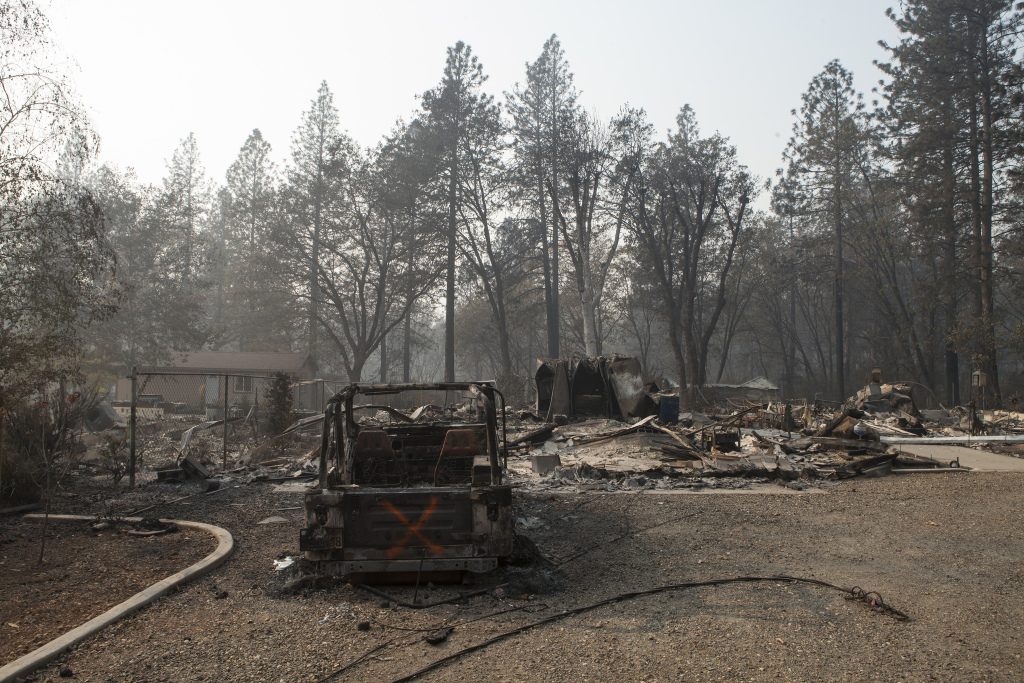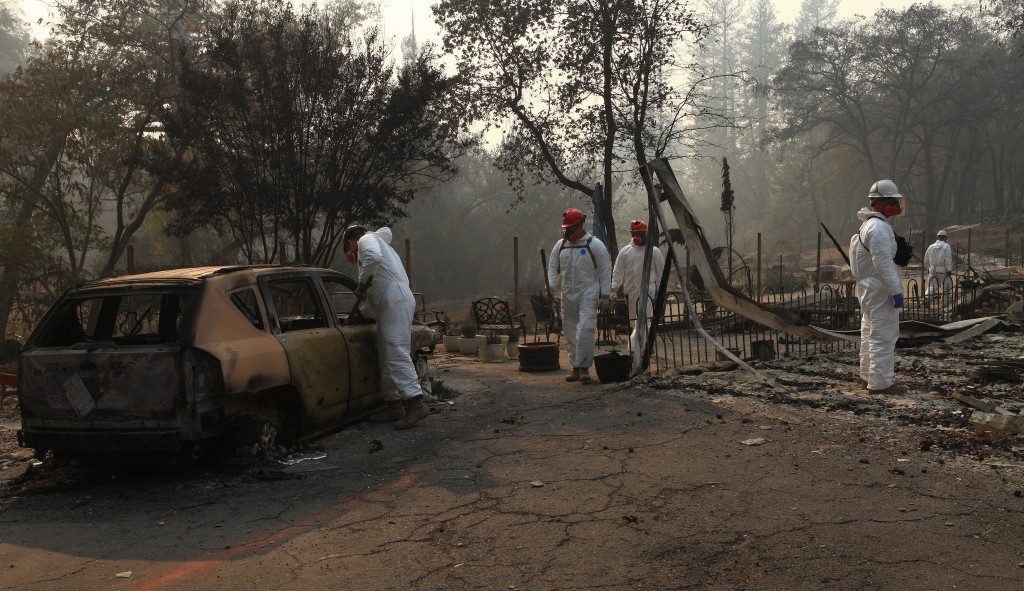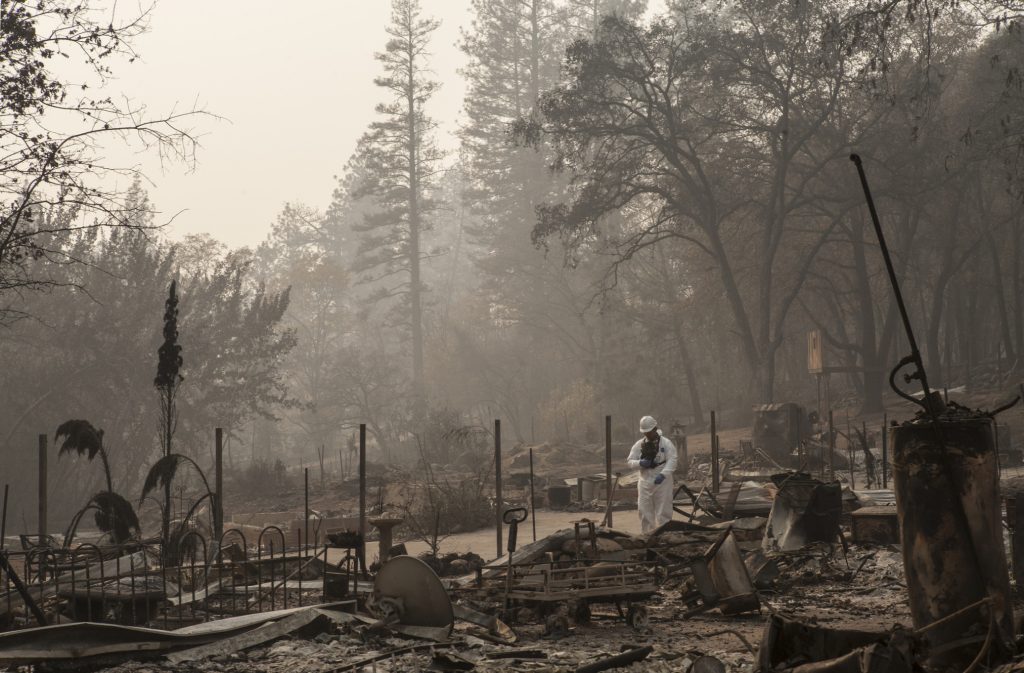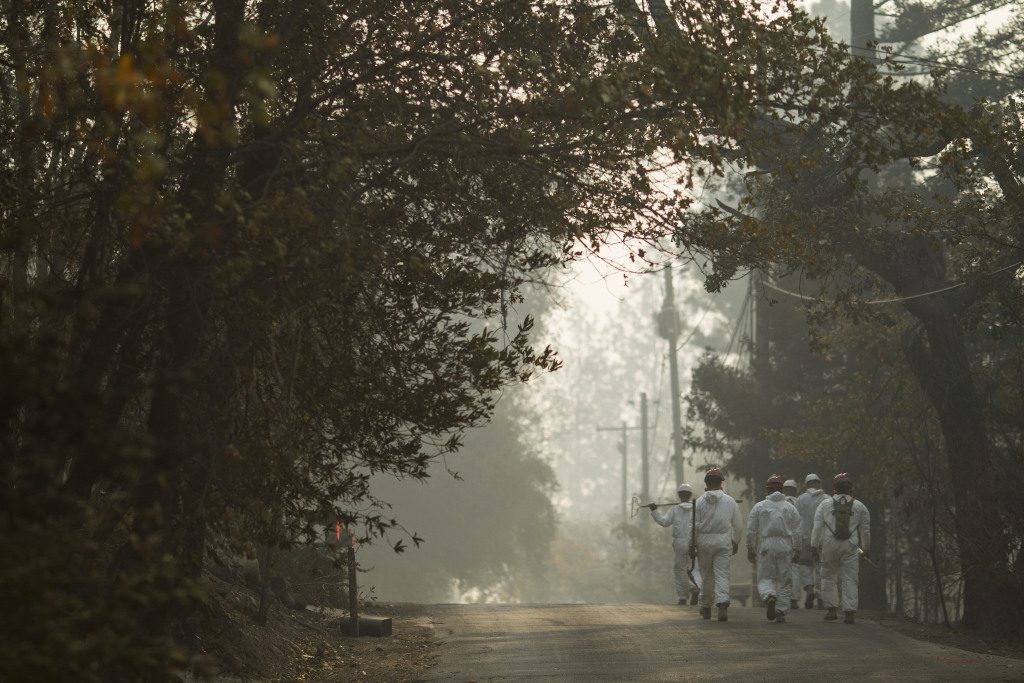
In all the smoke-filled photos of the Camp Fire devastation in Paradise, California one thing stands out to me: The buildings are gone but the trees are still standing.
The town of Paradise, California (population 26,000) was destroyed on 8 November 2018 by the Camp Fire, the deadliest and most destructive fire in California history. As soon as it ignited at 6:30am, the fire raced westward on 50-70 mph winds. By 8am it reached the Paradise Town Limit six miles away. Seven towns were forced to evacuate but not everyone made it out. As of 26 November, 88 are confirmed dead, 203 are still missing and tens of thousands are left homeless.
But the trees survived. You can see them in all the photos and videos including these taken on 17 Nov by the California National Guard as they searched the rubble and marked the damage.

Because the trees are still standing, the damage assessment has to be done by hand. This Washington Post article shows how the satellites can’t see through standing trees.
So why are the trees OK in this incinerated landscape? I’m sure it has to do with moisture.

Living trees contain more moisture than the dry wood in buildings. When blowing embers hit houses, they catch fire immediately. The trees’ moisture resisted. The fire moved on.
This video by Mike West shows how quickly fire consumes dry wood compared to living trees.
The scene is spooky now. Nearly everything is gone but the trees are still standing.

Soldiers from the California Army National Guard’s 649th Engineer Company, Chico, conduct search and debris clearing operations, Nov. 17, 2018, in Paradise, CA (photo by Senior Airman Crystal Housman)
p.s. Some trees are damaged and will fall sooner or later. Here’s an NPR story about trees in the fire zone.
p.p.s. See the damage extent on Cal-Fire’s Camp Fire Structure Status map. See satellite images here in the Washington Post.
(photos by Chico California National Guard, YouTube video by Mike West)
Very fascinating post Kate.
This displays why it is so important to keep watering your cut Christmas tree. As long as it keeps taking in moisture your safe. As soon as it stops taking moisture it becomes very dry and is very unsafe. Be safe this Christmas!
Thanks again for another great post.
Great observation, Gene!
Thank you for this explanation. When I saw a photo of one of these neighborhoods destroyed by fire, but with many trees still standing, I wondered the same thing.
– Carolyn
There was a bit on NPR (? can’t find it though) the other day about how the trees may be standing, but they may be very weakened, and crews are going through felling trees that may be unsafe. It is apparently quite a difficult thing to assess, especially with oaks. Trees may appear ok, but have smoldering centers, and just drop in a wind storm. Or, large limbs high up just drop. Still more damage to happen, I regret to say.
Steve, thanks for the info about the radio show. Here it is: https://www.npr.org/2018/11/26/670752900/who-is-responsible-for-burned-trees-after-a-wildfire